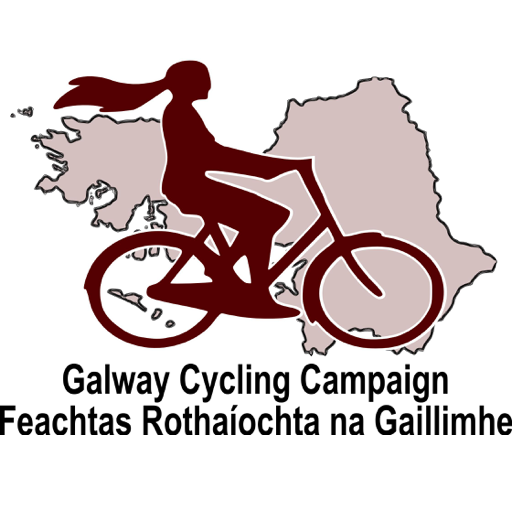Statement issued by Cyclist.ie on behalf of Dublin Cycling Campaign, Cork Cycling Campaign, Galway Cycling Campaign, Limerick Cycling Campaign, Maynooth Cycling Campaign, Skerries Cycling Initiative and Waterford Walk Cycle Campaign. These Irish cycling lobby groups have combined to form a new umbrella body, “Cyclist.ie”. Its main concerns are ensuring a dramatic improvement in road safety and traffic conditions for cyclists. It views the realisation of these aims as vital to facilitate a marked increase in the numbers of people choosing the bicycle as a means of daily transport.
DATE: 4 November 2008
CYCLING IN IRELAND: THE TIME TO CYCLE IS NOW!
The seven Irish cyclist advocacy groups have combined to form a new lobbying body called “Cyclist.ie” to raise the profile of cyclist issues and to campaign for action. Given rising transport costs, severe urban traffic congestion and a marked increase in the incidence of overweight and obese children, this is an ideal opportunity for Ireland to promote commuting and leisure cycling.
Most children live within 6 km of their school, a very manageable cycling distance for a healthy child. As a society we need to facilitate and encourage more children to cycle to school and to use their bicycles to socialise and explore their neighbourhoods.
With the 2006 census showing a mere 1.9% of adult commuters travelling by bicycle, cycling to work, school or college has become almost extinct. This is principally due to roads being cyclist-hostile due to (1) excessive traffic speeds and volumes, (2) badly designed and maintained cycling facilities, (3) proliferation of cyclist-hostile road infrastructure such as multi-lane one-way streets and multi-lane roundabouts, (4) poor cycle-parking provision and (5) poor driving standards, including close and dangerous overtaking.
In order for Ireland to meet its stringent Kyoto commitments, we urgently need to replace a large percentage of car journeys with cycling or walking. This applies particularly to journeys of under 6km. Such journeys can be accomplished relatively easily and quickly by bicycle in congested urban traffic. However, this modal shift can only happen if the roads are perceived to be safer, more pleasant places for newcomer cyclists and walkers.
Cyclist.ie does not seek the construction of additional cycle lanes and paths. It recognises that the mere painting of lines and rolling out of red tarmac treatments does not guarantee cyclists’ safety. Safety will come via globally revised road design standards, traffic law enforcement, and modifying drivers’ and cyclists’ behaviour in each other’s presence.
It seeks safer roads through (1) measures to restrict inappropriate traffic speeds and volumes and the introduction of a 30 km/h urban speed limit, (2) improved driver instruction, training and testing regimes that include safe interaction with cyclists, particularly for goods vehicle drivers, (3) enhanced road traffic law enforcement and new traffic regulations such as a defined minimum overtaking distance (1.5m) when drivers pass cyclists.
Cyclist.ie has already presented a detailed National Cycling Policy submission to the Minister for Transport, Mr. Noel Dempsey, TD under his Sustainable Travel and Transport Policy Initiative. Today, Cyclist.ie launches that document as a comprehensive guide for those interested in cycling in the Irish context. Cyclist.ie looks forward to co-operating with government and local authorities in selecting and applying the proven measures that its research shows to be most relevant to promoting cycling in Ireland.
NOTES:
Cyclist.ie is at http://www.cyclist.ie
The NCP submission to Department of Transport can be read at these URLs:
http://galwaycycling.org/files/publi…8_no_edits.pdf (2.67 MB)
http://seaview.mckillen.com/Cycling (PDF file titled NCP-Submission-19-10-08)
http://www.cyclist.ie/documents/National%20Cycling%20Promotion%20Policy%20Position%20Document%20-%20October%202008.pdf
Key measures to promote cycling include:
* motorised traffic speed reduction
* traffic volume reduction
* driver instruction and testing regimes that include safe interaction with cyclists.
* traffic skills training for cyclists starting at school level
* comprehensive provision of secure cycle parking
* elimination of urban multi-lane one-way streets
* two-way access for cyclists to one-way streets
* elimination of cyclist-hostile road features such as slip roads and large roundabouts
* bicycle friendly adaptations to traffic signals
* adequate road surface drainage and maintenance
* creation of a “cyclist permeable” urban environment
* restrictions on HGV access to urban areas
* shared bus/cycle lanes of appropriate safe width
* where appropriate, cycle lanes/hard shoulders of adequate width (2m minimum)
Note: The Cyclist.ie website is in development. It currently has a copy of this press release, links to the umbrella group members, and the consensus document available for download.

Leave a Reply